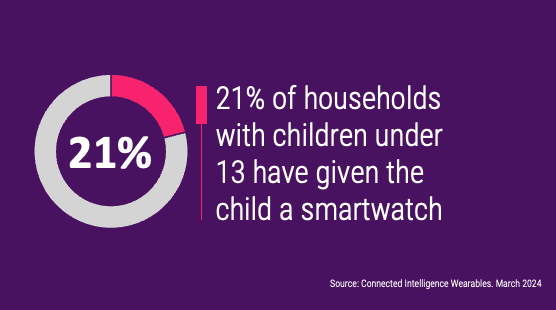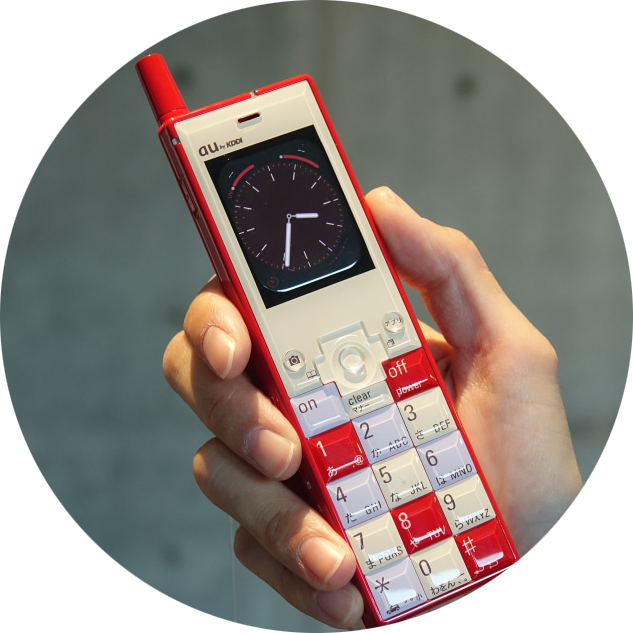
Google combines gaming and exercise, wrapped up with cellular connectivity
Google has announced a new smartwatch aimed at children aged 7 and up. The new watch – the Fitbit Ace LTE – combines activity tracking with gaming to encourage children to exercise. The hardware is a simplified version of the Pixel Watch 2 (without stress or sleep tracking) squished into a square form factor (with rounded corners – which is driving the creation of “squircle” as a form factor definition). But the real magic and differentiator comes from the watch straps, as well as the onboard gaming features.
The watch comes with a digital pet – called “eejies” – which are customizable “creatures” that feed off daily activity. As the wearer attains their move goals, this feeds the eejie, making it healthier and happier (yes, kind of like the old Tamagotchi). These eejies can interact with another Fibit Ace LTE-toting wearer, so they can “visit” another watch nearby and leave messages, which is clearly a move to try and drive increased ownership among peer groups.
Gaming is based around the Fitbit Arcade, a new library of games that are available for the watch. These are clever as they take movement into account. For example, the fishing game involves casting out your line by physically casting with your arm, while the driving game steers thanks to you moving your wrist. Further, the games subtly bring exercise into them: in the fishing game, you run out of bait after a few minutes and need to walk to the store – by physically walking a certain distance –to get more bait.
The watch straps also have embedded smarts in them (see Differentiation, Innovation and Patience for our side-take on these). The watch recognizes a specific watch strap – or cartridge as Google calls them (think gaming cartridge) – and each strap comes with bonus content, such as backgrounds and new items for your eejie. The opportunities here are seemingly endless for cross promotions, such as Disney-themed straps and associated content.
So finally, to the pricing. Google has priced the watch at $230 with the monthly LTE service (provided via Google’s Fi) at $10 per month. That’s not cheap, but when you compare it to the cost of a smartphone it becomes more reasonable. Further, Google is offering a promotional price for the ongoing service with a 50% discount for an annual subscription. It appears that the LTE connection is non-negotiable as it is needed to get all the above smarts to work. But, of course, it also means that the child is contactable via calls and messages (and can make calls too), not to mention the ability to track their location which is a key incentive for most parents.
The Circana Take:
- This is a particularly strong option for the younger age group and we expect it to be relatively successful. However, while the device aimed at “7 and up” we would cap the opportunity at 12 years of age at the very highest: beyond that, we expect kids to look for a more “grown-up” smartwatch and Google needs to work on how to bridge this transition to ensure that they migrate to a Pixel Watch.
- The smartwatch is becoming a first-device for kids who get one before a smartphone in many cases. The downside of this Google device is that parents will have to buy it, rather than passing down a discarded watch from the parent. But the advantages far outweigh that issue, offering a device that should be appealing to the kids while providing an important communications and tracking tool to the parents.
- Google should consider a low-priced insurance plan for the device to allay parental fears that their child will break it. It seems to be a relatively tough product, with Gorilla Glass 3, but still, kids will be kids.
- Apple has been clearly winning minds and hearts among the younger audience. We estimate that 67% of children under 13 who have a smartwatch are wearing an Apple Watch (Connected Intelligence Wearables Ownership Report, May 2024). That is due to the dominance of Apple watches that helps drive a healthy pass-me-down market to the child from the parent, the ease of Family Setup and the fact that Apple was early to market with the Family Setup option. The new Fitbit Ace LTE gives Google the ability to counter Apple’s dominance.
- Fitbit used to be a powerful brand in the kids’ market: the original Fitbit activity trackers were the activity trackers that kids wanted to wear (until the market moved on to smartwatches of course). Further, the Google brand carries some baggage as many consumers immediately associate Google with data mining. As such, it’s a smart move to embrace the Fitbit brand for this younger audience.
- To be clear, Google will NOT be using any of the device data and has noted that the Ace LTE is “built with privacy in mind, front and center, and that only parents will ever be shown a child’s location or activity data in their apps.” Further, there will be no third-party apps or ads on the device.
- A couple of small snarks regarding the “eejie”. Firstly, we would have expected a cuter product more reminiscent of Pokémon rather than a two-legged, human looking creature. Secondly, the name… “eejie” is rather close to “Eejit” which in the UK and Ireland means “idiot”. But hey, maybe the little critter isn’t that smart after all?
Put a Pin in it
It seems the Humane, the company behind the AI Pin wearable, is for sale. According to a report from Bloomberg, the company is seeking a price of between $750 million and $1 billion. That seems optimistic for a company that has stumbled so early in its life. As we noted back in November (see Humane’s Brilliant Failure), the product is an interesting take on a post-smartphone world that really doesn’t live up to its promises. That’s not to say there isn’t some interesting IP to be had in a sale, but we suspect that is all there is. Early reviews of the product have been less than kind, and we suspect sales are very low.
- The AI Pin is an interesting concept, but the consumer world is still well and truly smartphone focused. Further, the real brains of the Pin is the underlying AI, rather than the form-factor, and that is an area of intense competition right now. We suspect that Humane simply doesn’t have the resources to keep up with the innovative AI leaps and bounds coming from bigger players such as Google, Microsoft and (we expect) Apple.
- And the AI is probably better suited to a different form factor, such as a smartwatch which has a screen, rather than an awkward-looking device that you wear on your chest.
Look back in Amusement?
In less serious news, Japan’s KDDI has brought back the Infobar phone – which was a groundbreaking phone design in 2003 – as a case for the Apple Watch. You clip the Watch into the case and, low and behold, it looks just like the original Infobar. Of course, the key difference is that nothing on the case interacts with the Apple Watch – the keypad, for example, does nothing. But it does suddenly make your connected Apple Watch look like a seriously-cool retro Japanese phone. And of course, you have the touch-screen Watch interface that allows you to do more than you could with the original Infobar (apps for example, not to mention that touch screen).

The Circana Take:
- The smartwatch is still not really a replacement for the smartphone (see The Smartwatch Identity Crisis) but that’s not really the point of this case. It’s a fun accessory that will allow you to use some of the basics of the watch – such as texting, calling and other simple features – while looking like you have a phone that will turn heads. It’s fun, it’s neat and… it’s different.
- While we remain unconvinced that the “dumphone” is making a major comeback, there is certainly some appeal to having a not-so-smart-phone with you instead sometimes. Besides, why not mix things up sometimes to confuse and confound your friends.
- Of course, this is hardly a nostalgic phone for most consumers in the US… and the chance of it ever selling here is very, very slim. But as a concept for what can be done? Brilliant. Perhaps it’s time for a range of retro Nokia phones…